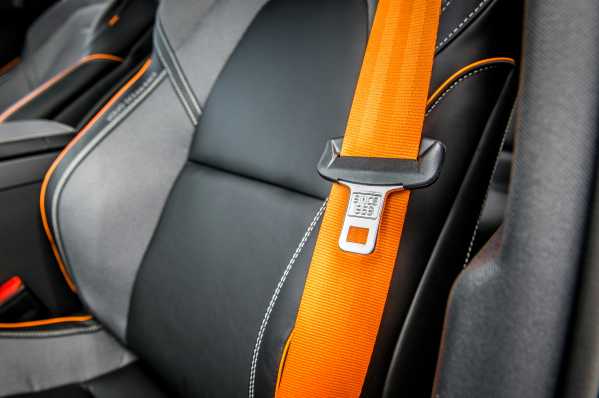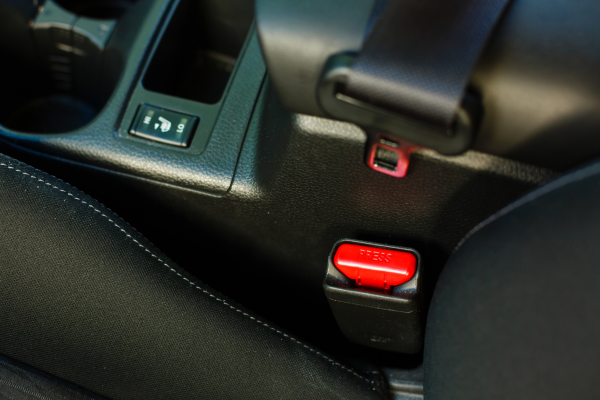Vehicle Safety
How to Unlock a Jammed Seat Belt After an Accident

How to Unlock a Jammed Seat Belt After an Accident
Car accidents can be traumatic and stressful experiences. Amid the chaos, one common issue that drivers and passengers might face is a jammed seat belt. A jammed seat belt can prevent you from exiting the vehicle quickly, posing additional risks. This detailed guide will walk you through understanding the causes of a jammed seat belt and the steps you can take to unlock it safely and effectively after an accident.
Common Causes of a Jammed Seat Belt
Impact of Collision
Seat belts are designed to lock up during a collision to restrain the occupant and minimize injury. The force of the impact can cause the retractor mechanism to lock, and sometimes it doesn't release easily afterward.
Twisting and Tangling
During an accident, the seat belt can twist or tangle, making it difficult to pull out. This can happen if the belt was not properly stowed or if there was significant movement inside the car.
Debris and Damage
Debris from the accident, such as broken glass, bent metal, or other objects, can interfere with the seat belt mechanism. Additionally, damage to the car's frame can affect how the seat belt retractor functions.
Steps to Unlock a Jammed Seat Belt
Assess the Situation
Before attempting to unlock a jammed seat belt, make sure the vehicle is in a safe position and that there are no immediate dangers such as fire or oncoming traffic. If the vehicle is severely damaged or you're unsure about your surroundings, call emergency services immediately.
Check for Twists and Debris
Examine the seat belt for any visible twists or tangles. If you can see where the belt is twisted, carefully untwist it. Remove any debris that might be in the way or obstructing the belt mechanism.
Use a Seatbelt Cutter
Keeping a seatbelt cutter in your vehicle as part of your emergency kit can be incredibly useful. This tool is designed to slice through the seat belt fabric quickly and safely. To use it, simply slide the cutter over the belt and apply pressure to cut through the material.
Apply Pressure and Retract
If the retractor mechanism has locked, you can try applying gentle but firm pressure to the belt and then slowly allowing it to retract. Sometimes, the locking mechanism can reset itself if the belt is retracted smoothly.
Manual Release Button
Some vehicles come equipped with a manual release button on the seat belt retractor. This button, typically accessible by removing a small cover, can manually release the lock on the seat belt. Consult your vehicle's manual for specific instructions on how to use this feature.
Seek Professional Help
If you're unable to unlock the seat belt, it might be best to seek professional help from roadside assistance or a tow service. They will have specialized tools and expertise to safely free the jammed seat belt without causing further damage or injury.
Preventative Measures
To mitigate the chances of dealing with a jammed seat belt in future emergencies, consider taking the following preventative measures:
Regular Inspection: Regularly inspect your seat belt mechanism for wear and tear.
Proper Stowing: Ensure that seat belts are retracted fully and not left twisted or tangled.
Emergency Tools: Keep a seatbelt cutter or multipurpose emergency tool in your vehicle's emergency kit.
Routine Maintenance: Have your seat belts checked as part of your routine vehicle maintenance.
While a jammed seat belt after an accident can add to the stress of the situation, knowing the steps to address it can help you remain calm and effective. Always prioritize safety and seek professional assistance when needed. Preparedness is key, so keeping emergency tools in your vehicle and understanding how to use them can make a significant difference in critical moments.
L&D Solutions offers a range of services including seat belt repair and pretensioner repair to ensure your vehicle's safety systems are always in top condition.
Vehicle Maintenance
Repairing Your Car's Seat Belt: A Step-by-Step Guide
Vehicle Safety
Demystifying Airbag Modules: Your Questions Answered
Vehicle Safety
Fixing a Stuck Seat Belt: Your DIY Guide
How to Unlock a Jammed Seat Belt After an Accident
Car accidents can be traumatic and stressful experiences. Amid the chaos, one common issue that drivers and passengers might face is a jammed seat belt. A jammed seat belt can prevent you from exiting the vehicle quickly, posing additional risks. This detailed guide will walk you through understanding the causes of a jammed seat belt and the steps you can take to unlock it safely and effectively after an accident.
Common Causes of a Jammed Seat Belt
Impact of Collision
Seat belts are designed to lock up during a collision to restrain the occupant and minimize injury. The force of the impact can cause the retractor mechanism to lock, and sometimes it doesn't release easily afterward.
Twisting and Tangling
During an accident, the seat belt can twist or tangle, making it difficult to pull out. This can happen if the belt was not properly stowed or if there was significant movement inside the car.
Debris and Damage
Debris from the accident, such as broken glass, bent metal, or other objects, can interfere with the seat belt mechanism. Additionally, damage to the car's frame can affect how the seat belt retractor functions.
Steps to Unlock a Jammed Seat Belt
Assess the Situation
Before attempting to unlock a jammed seat belt, make sure the vehicle is in a safe position and that there are no immediate dangers such as fire or oncoming traffic. If the vehicle is severely damaged or you're unsure about your surroundings, call emergency services immediately.
Check for Twists and Debris
Examine the seat belt for any visible twists or tangles. If you can see where the belt is twisted, carefully untwist it. Remove any debris that might be in the way or obstructing the belt mechanism.
Use a Seatbelt Cutter
Keeping a seatbelt cutter in your vehicle as part of your emergency kit can be incredibly useful. This tool is designed to slice through the seat belt fabric quickly and safely. To use it, simply slide the cutter over the belt and apply pressure to cut through the material.
Apply Pressure and Retract
If the retractor mechanism has locked, you can try applying gentle but firm pressure to the belt and then slowly allowing it to retract. Sometimes, the locking mechanism can reset itself if the belt is retracted smoothly.
Manual Release Button
Some vehicles come equipped with a manual release button on the seat belt retractor. This button, typically accessible by removing a small cover, can manually release the lock on the seat belt. Consult your vehicle's manual for specific instructions on how to use this feature.
Seek Professional Help
If you're unable to unlock the seat belt, it might be best to seek professional help from roadside assistance or a tow service. They will have specialized tools and expertise to safely free the jammed seat belt without causing further damage or injury.
Preventative Measures
To mitigate the chances of dealing with a jammed seat belt in future emergencies, consider taking the following preventative measures:
Regular Inspection: Regularly inspect your seat belt mechanism for wear and tear.
Proper Stowing: Ensure that seat belts are retracted fully and not left twisted or tangled.
Emergency Tools: Keep a seatbelt cutter or multipurpose emergency tool in your vehicle's emergency kit.
Routine Maintenance: Have your seat belts checked as part of your routine vehicle maintenance.
While a jammed seat belt after an accident can add to the stress of the situation, knowing the steps to address it can help you remain calm and effective. Always prioritize safety and seek professional assistance when needed. Preparedness is key, so keeping emergency tools in your vehicle and understanding how to use them can make a significant difference in critical moments.
L&D Solutions offers a range of services including seat belt repair and pretensioner repair to ensure your vehicle's safety systems are always in top condition.
Vehicle Maintenance
Repairing Your Car's Seat Belt: A Step-by-Step Guide
Vehicle Safety
Demystifying Airbag Modules: Your Questions Answered
Vehicle Safety
Fixing a Stuck Seat Belt: Your DIY Guide


